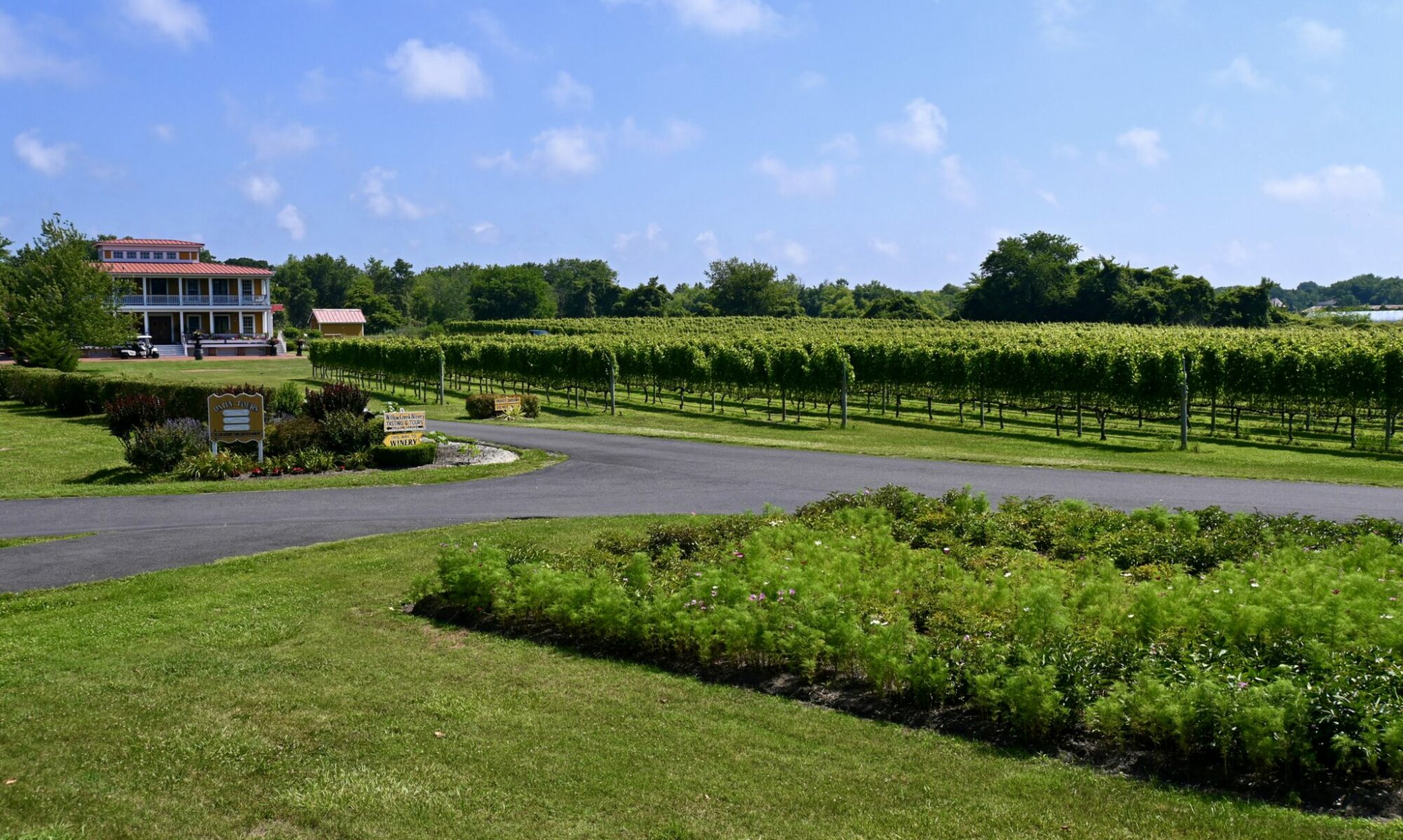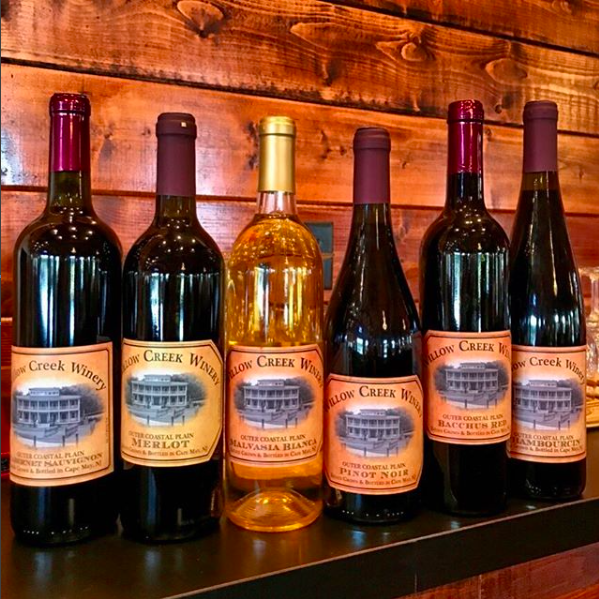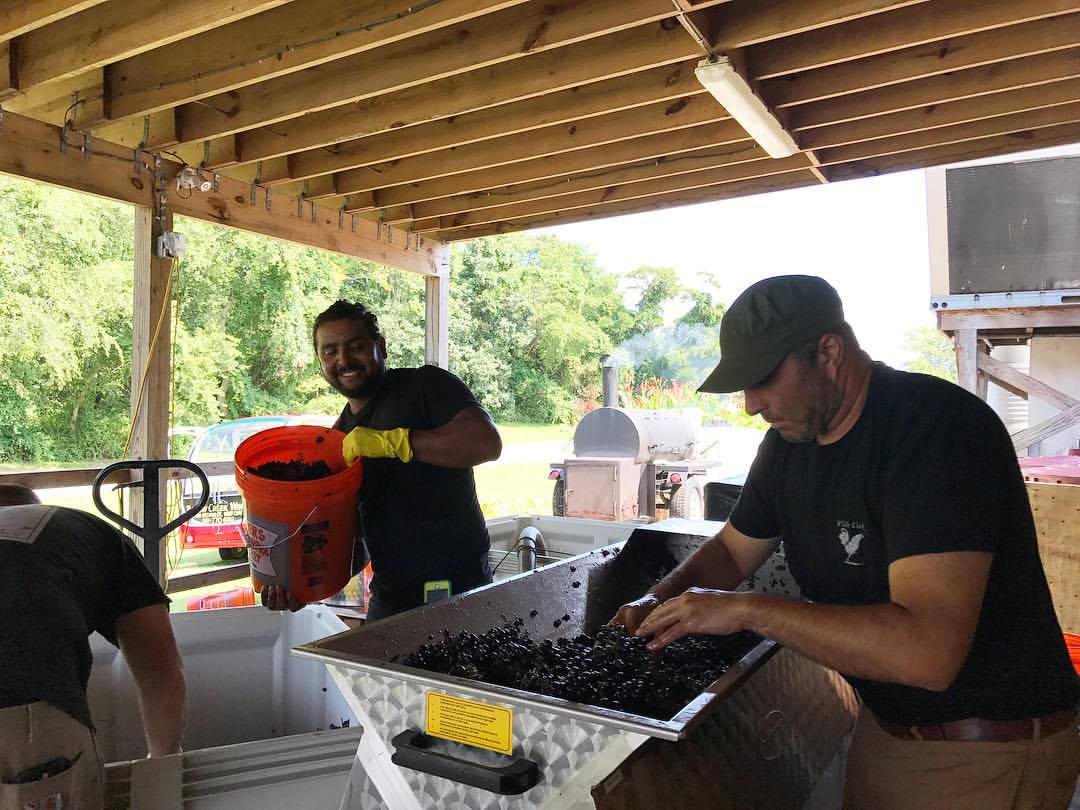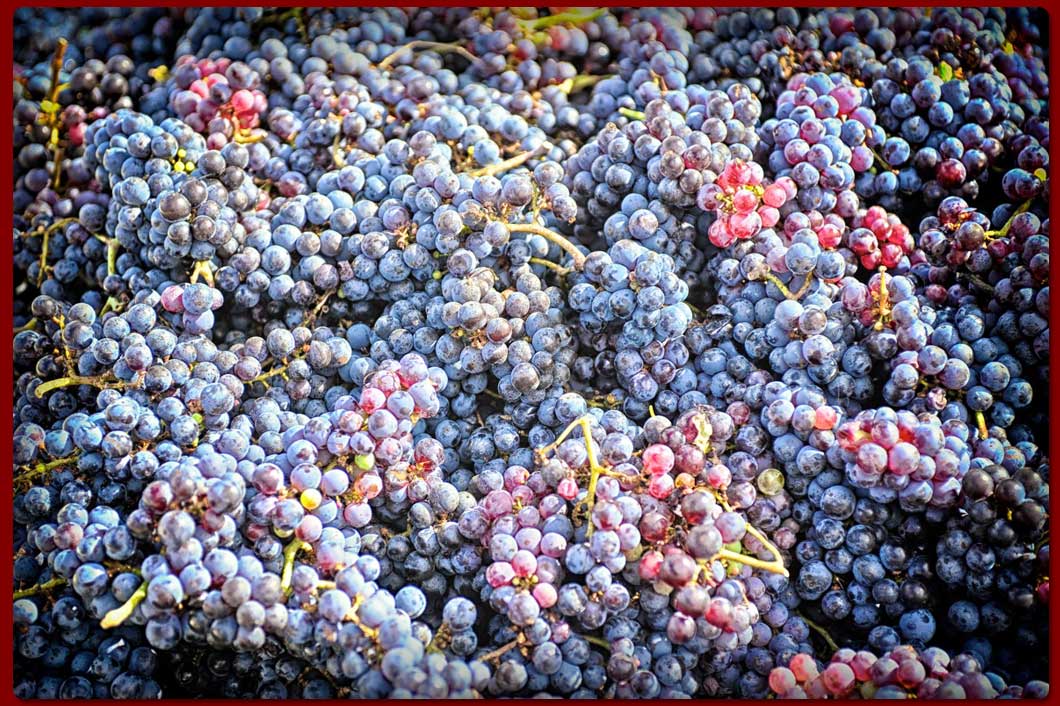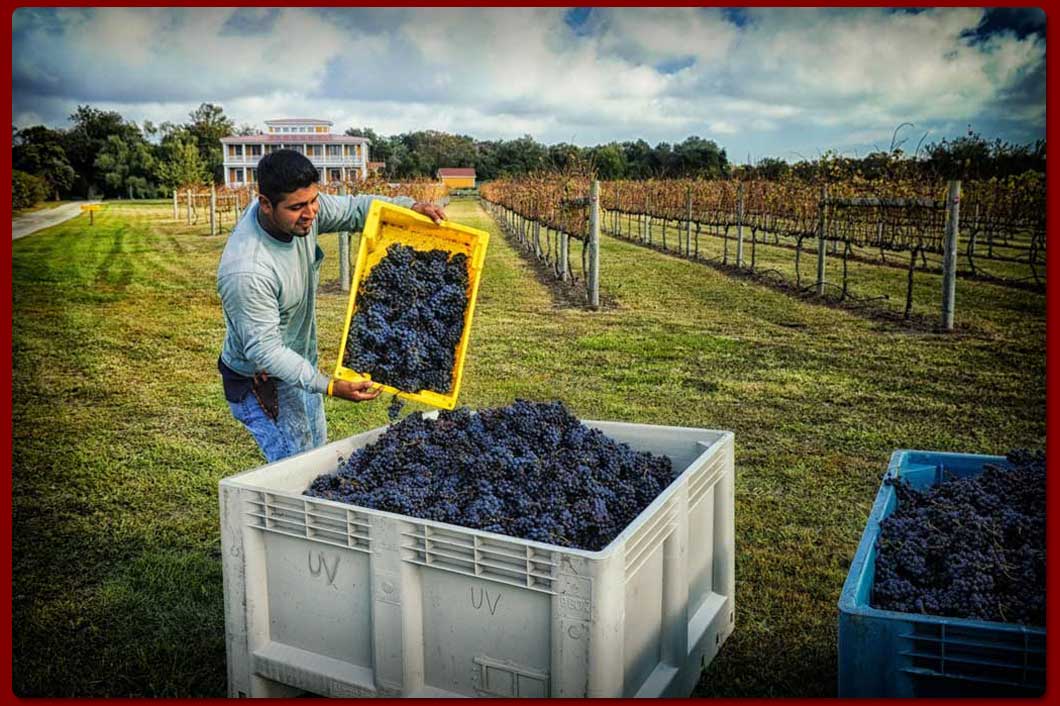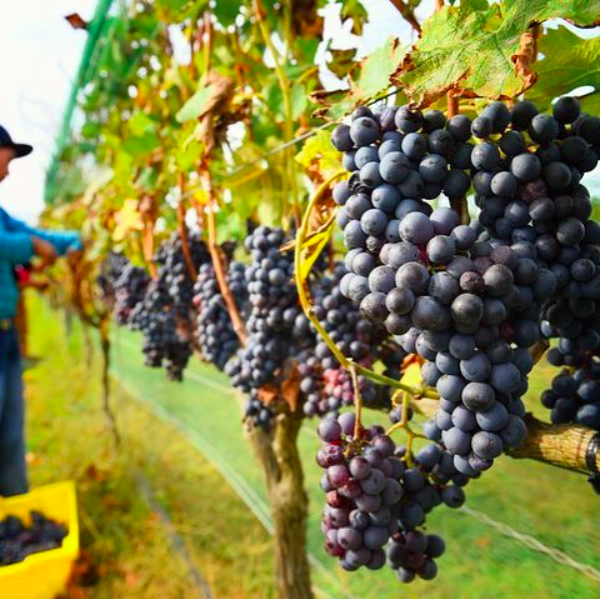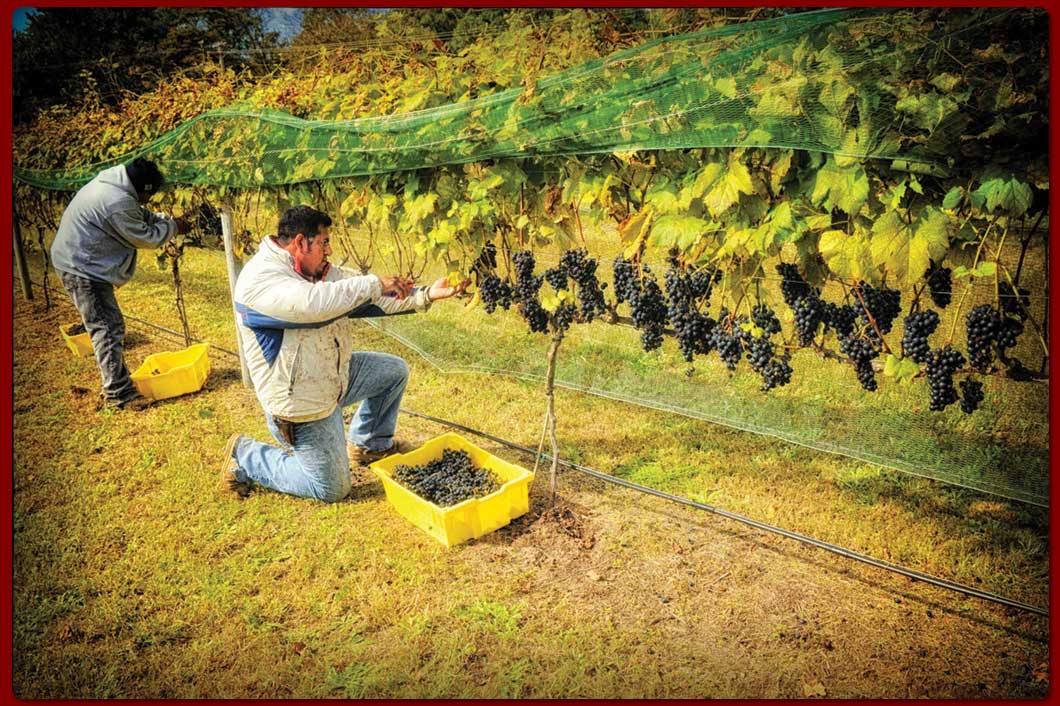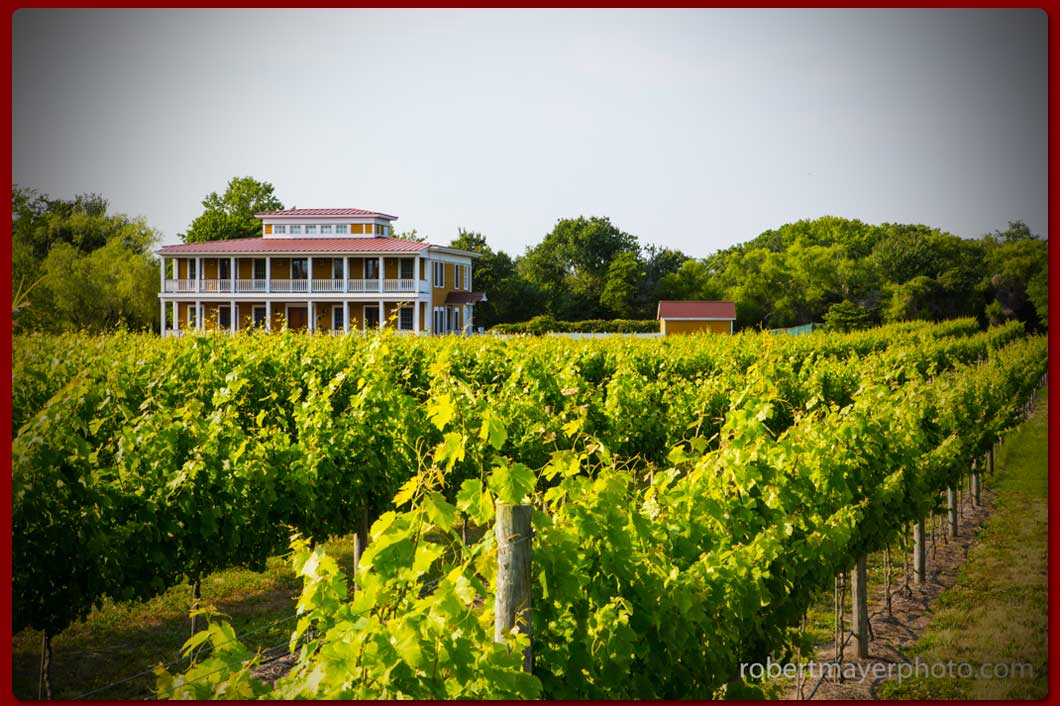The nights are cool, leading to perfect growing conditions in the heart of a micro-climate reminiscent of Bordeaux…
In our section of South Jersey’s Outer Coastal Plain wine growing region, the days are warm but the nights are cool, leading to perfect growing conditions in the heart of a micro-climate reminiscent of Bordeaux.
Climate here is influenced by the tempering maritime effects of the Atlantic Ocean and Delaware Bay. Spring frosts that could damage buds or the flowering of the vines are rare. Coastal fog and cooler temperatures allow the fruit the time on the vine it takes to develop Willow Creek’s signature rich flavor profile. At Willow Creek we celebrate the terroir of this region, well-drained rich, fertile sandy loam soils that are so highly favorable to an exceptional grape harvest.
Click here to view our current wine list and grill menu.
We currently grow thirteen varietals of vinifera on our farm in West Cape May and have recently planted 5,000 new baby vines at our sister property, LeGates Farm in North Cape May.
Sauvignon blanc is a green-skinned grape variety that originates from the Bordeaux region of France. The grape most likely gets its name from the French words sauvage (“wild”) and blanc (“white”) due to its early origins as an indigenous grape in South West France. Sauvignon blanc is planted in many of the world’s wine regions, producing a crisp, dry, and refreshing white varietal wine.
Merlot is a dark blue-colored wine grape variety, that is used as both a blending grape and for varietal wines. The name Merlot is thought to be a diminutive of merle, the French name for the blackbird, probably a reference to the color of the grape. Its softness and “fleshiness”, combined with its earlier ripening, makes Merlot a popular grape for blending with the sterner, later-ripening Cabernet Sauvignon, which tends to be higher in tannin. Along with Cabernet Sauvignon, Cabernet Franc, Malbec and Petit Verdot, Merlot is one of the primary grapes used in Bordeaux wine, and it is the most widely planted grape in the Bordeaux wine regions.
Chambourcin is a French-American interspecific hybrid grape variety with an uncertain parentage. The grape has only been available since 1963. It has a good resistance to fungal disease and is one of the parents of the new disease-resistant variety, Regent, which is increasing in popularity among German grape growers. The grape produces a deep-colored and aromatic wine. It can be made into a dry style or one with a moderate residual sugar level. Chambourcin is a teinturier, a grape whose juice is pink or red rather than clear like most red vitis vinifera cultivars.
Cabernet Sauvignon is one of the world’s most widely recognized red wine grape varieties. It is grown in nearly every major wine producing country among a diverse spectrum of climates and became internationally recognized through its prominence in Bordeaux wines where it is often blended with Merlot and Cabernet Franc. Despite its prominence in the industry, the grape is a relatively new variety, the product of a chance crossing between Cabernet Franc and Sauvignon blanc during the 17th century in southwestern France. Its popularity is often attributed to its ease of cultivation—the grapes have thick skins and the vines are hardy and naturally low yielding, budding late to avoid frost and resistant to viticultural hazards such as rot and insects—and to its consistent presentation of structure and flavors which express the typical character of the variety. The classic profile of Cabernet Sauvignon tends to be full-bodied wines with high tannins and noticeable acidity that contributes to the wine’s aging potential. In cooler climates, Cabernet Sauvignon tends to produce wines with blackcurrant notes that can be accompanied by green bell pepper notes, mint and cedar which will all become more pronounced as the wine ages. In more moderate climates the blackcurrant notes are often seen with black cherry and black olive notes while in very hot climates the currant flavors can veer towards the over-ripe and “jammy” side.
Malvasia Bianca is a varietal grown historically in the Mediterranean region, Balearic islands, Canary Islands and the island of Madeira, but now grown in many of the winemaking regions of the world. These grapes are used to produce white (and more rarely red) table wines, dessert wines, and fortified wines of the same name, or are sometimes used as part of a blend of grapes, such as in Vin Santo.
Corot Noir is a Hybrid grape variety for use in red wine production. It was developed by grape breeder Bruce Reisch at the Cornell University New York State Agricultural Experiment Station and released on July 7, 2006. Corot noir is the result of a cross between hybrids Seyve Villard 18-307 and Steuben in 1970. It ripens mid-season to late-season, and according to Reisch, its wines “are free of the hybrid aromas typical of many other red hybrid grapes, and can be used for varietal wine production or for blending. The distinctive red wine has a deep red color and attractive berry and cherry fruit aromas”.
Pinot Noir is a red wine grape. The name is derived from the French words for pine and black. The pine alluding to the grape variety having tightly clustered, pine cone-shaped bunches of fruit. Pinot Noir grapes are grown around the world, mostly in the cooler climates, and the grape is chiefly associated with the Burgundy region of France. Pinot Noir is used to make the Italian wine Franciacorta. Pinot Noir is the primary varietal used in sparkling wine production in Champagne and other wine regions. Pinot Noir is a difficult varietal to cultivate and transform into wine. The grape’s tendency to produce tightly packed clusters makes it susceptible to several viticultural hazards involving rot that require diligent canopy management. The thin-skins and low levels of phenolic compounds lends Pinot to producing mostly lightly colored, medium bodied and low tannin wines that can often go through phases of uneven and unpredictable aging. When young, wines made from Pinot Noir tend to have red fruit aromas of cherries, raspberries and strawberries. As the wine ages, Pinot has the potential to develop more vegetal and “barnyard” aromas that can contribute to the complexity of the wine.
Seyval blanc is a hybrid wine grape variety used to make white wines. Its vines ripen early, are productive and are suited to fairly cool climates. As it contains some non-vinifera genes, it is outlawed by the EU authorities for quality wine production, which was an issue of conflict with the English wine industry.
Petit Verdot is a variety of red wine grape, principally used in classic Bordeaux blends. It ripens much later than the other varieties in Bordeaux, often too late, so it fell out of favor in its home region. When it does ripen it adds tannin, color and flavor, in small amounts, to the blend. Petit verdot has attracted attention among winemakers in the New World, where it ripens more reliably and has been made into single varietal wine. It is also useful in ‘stiffening’ the mid palate of Cabernet Sauvignon blends. When young its aromas have been likened to banana and pencil shavings. Strong tones of violet and leather develop as it matures.
Pinot Grigio is a white wine grape variety . Thought to be a mutant clone of the Pinot noir variety, it normally has a grayish-blue fruit, accounting for its name but the grapes can have a brownish pink to black and even white appearance. The wines produced from this grape also vary in color from a deep golden yellow to copper and even a light shade of pink, and it is one of the more popular grapes for skin-contact wine. Pinot gris is grown around the globe with the “spicy” full-bodied Alsatian and lighter-bodied, more acidic Italian styles being most widely recognized.
Malbec is a purple grape variety used in making red wine. The grapes tend to have an inky dark color and robust tannins, and are known as one of the six grapes allowed in the blend of red Bordeaux wine. The French plantations of Malbec are now found primarily in Cahorsin South West France. It is increasingly celebrated as an Argentine varietal wine and is being grown around the world. The Malbec grape is a thin-skinned grape and needs more sun and heat than either Cabernet Sauvignon or Merlot to mature. It ripens mid-season and can bring very deep color, ample tannin, and a particular plum-like flavor component to add complexity to claret blends. As a varietal, Malbec creates a rather inky red (or violet), intense wine, so it is also commonly used in blends, such as with Merlot and Cabernet Sauvignon to create the red French Bordeaux claret blend. Other wine regions use the grape to produce Bordeaux-style blends.
